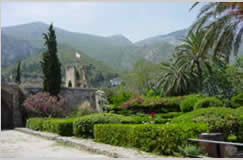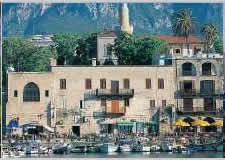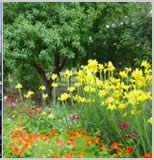



 |
 |
 |
 |
||||||||
Regions of Northern CyprusGazi Magosa , Northern Cyprus Founded by Ptolemy Philadelphus of Egypt in the 3rd Century BC. Originally a fishing village Famagusta was grown by the influx of refugees first from Salamis in 648 then by the Christian Refugees after the invasion of the Holy Lands.(1291 AD.) It soon became one of the most important and wealthy cities in the region. At one time (early 14th Century) about 350 churches and many trading posts were built within the area later fortified with impressive defensive walls by the Venetians. In 1372 The Genoese invaded the island and the City sacking most of its wealth. In 1571 under the long siege by the Ottoman Turks many buildings were damaged by the cannon balls. The British used the stones to build the Suez Canal and the Quays of Port Said. In 1974 the City was again under siege by Greek Cypriots, with 11,000 Turkish Cypriots defending the City until it was ended by the arrival of the Turkish Troops. The important Historical monuments worth visiting are: The Walls and Bastions, Lala Mustafa Pasha Mosque (St. Nicholas Cathedral) Othello Tower, Remains of Countless Medieval Churches. Salamis, Kings Tombs, St. Barnabas Monastery, The Ruins of Enkomi. The visitor will enjoy many fine beaches stretching miles along the coast of ancient Salamis. Girne, Northern Cyprus Kyrenia is founded in the 10th Century BC. , by Achaean settlers and was for many Centuries one of the 10 Kingdoms of Cyprus. In the 7th Century it was fortified by Byzantine who built the original Castle later expanded first by the Lusignans and then by the Venetians. Under Ottomans the town had remained a minor port. The British built a harbour and a Quay. Under British Empire the Town was an en-route resting place for officers, captains and their families for its picturesque situation, its beautiful harbour and leisurely and romantic atmosphere. The Town still retains its character with many restaurants and bars by the Harbour and small hotels spreading east and west of the town, along the coastline which raises to form an impressive backdrop with the mountains behind. The region now an attractive holiday resort boasts many historic sites worth visiting. Among these the Harbour Castle and the Shipwreck Museum, The St. Hilarion Castle, The Bellapais Abbey, the Folk Art and the Icon Museums are the most important. Guzelyurt, Northern Cyprus Situated in the Northwest of Cyprus, Guzelyurt is one of the richest agricultural areas in Cyprus, famous particularly for the Citrus (Orange, Lemon, Grapefruit) and strawberries from the area which thrive in its fertile red soil. Guzelyurt is an ideal picnic spot for those who want to escape from the noise and rush of the city life and spend the day in the peace and quiet of natural surroundings. In spring the light breezes scatter the white orange blossoms from which you can smell the fragrance around the town, while in other seasons the golden oranges and lemons shine on the trees. A large proportion of the citrus fruits are exported, and the remaining are made into fruit juice and canned for local consumption and export. Visit the former Monastery of St. Mamas, originally Byzantine with Gothic establishments. Some of the carvings date from c. 1500. The Ruins of Soli (600 BC) and the Palace of Vouni, from the 5th century BC, are a must for archaeologists or those interested in antiquities. Iskele, Northern Cyprus On the return from Karpaz to Famagusta you pass the village Yeni Iskele. The Greek name of the village is Trikomo. The name Yeni Iskele is a reminder of the relocation of Turkish Cypriots from the Turkish district Iskele in the city of Larnaca on the island’s south coast. The Turkish Cypriots who lived there before had to go away after the war. They moved in 1975 to Trikomo, which was renamed to Yeni (new) Iskele. At the centre of the village there’s the 15th century church of St. Jacob (Avios Iakovos). There’s an odd coincidence in the fact that the village was the birthplace of the EOKA-colonel George Grivas. He was a leading spokesman of Cyprus reunion with Greece. Grivas died six months before the war in 1974. Lefkoşa, Northern Cyprus The foundation of the city dates back around 2250 years and it is now the capital of the island with a population of around 110000 and was developed mainly during the Lusignan period. The city is divided into Turkish and Greek sectors by a boundary known as the green line which runs in an east - west direction. The ramparts, which were built by the Venetians in 1570 to protect the city from the Turks, are thick and high. They encircle the city and are 4.5km in length with 11 towers. Inside the city walls are numerous remains of the Middle Ages and later periods. Outside the walls are no remains whatsoever of the Middle Ages since materials from building outside of the walls have been used in the restoration of the ramparts at various times. Inside the city walls are beautiful examples of Gothic and Ottoman architectural forms, among which are the Selimiye Mosque (St. Sophia Cathedral), Bedesten (covered bazaar - St. George Cathedral), a Lapidary Museum set in an old Venetian house and an obelisk, while belonging to the Ottoman period are the Arabahmet Mosque, the Buyuk Han (Grand Inn), the Kumarcilar Han (Gamblers' Inn), the Sultan Mahmut II Library, and countless other monuments. Like the other towns of Cyprus which remained under Ottoman rule for more than 300 years, Lefkosa too is typically Turkish in character. |
| © 2005 - 2016 Distinctive Properties Ltd. |
|